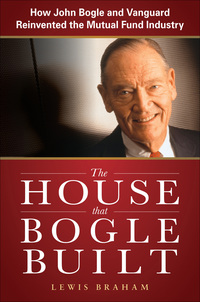Question
1. What is the present value of a perpetual stream of cash flows that pays $50,000 at the end of year one and then grows
1. What is the present value of a perpetual stream of cash flows that pays $50,000 at the end of year one and then grows at a rate of 3% per year indefinitely? The rate of interest used to discount the cash flows is 13%. Question content area bottom Part 1 The present value of the growing perpetuity is $enter your response here. (Round to the nearest cent.)
2. As a result of winning the Gates Energy Innovation Award, you are awarded a growing perpetuity. The first payment will occur in a year and will be for $20,000. You will continue receiving monetary awards annually with each award increasing by 6 percent over the previous award, and these monetary awards will continue forever. If the appropriate interest rate is 10 percent, what is the present value of this award? Question content area bottom Part 1 The present value of the award is $enter your response here. (Round to the nearest cent.)
3. You are given three investment alternatives to analyze. The cash flows from these three investments are as follows: Investment Alternatives
You are given three investment alternatives to analyze. The cash flows from these three investments are as follows:
| Investment Alternatives | ||||||
| End of Year | A | B | C | |||
|---|---|---|---|---|---|---|
| 1 | $ | 19,000 | $ | 19,000 | ||
| 2 | 19,000 | |||||
| 3 | 19,000 | |||||
| 4 | 19,000 | |||||
| 5 | 19,000 | $ | 19,000 | |||
| 6 | 19,000 | 95,000 | ||||
| 7 | 19,000 | |||||
| 8 | 19,000 | |||||
| 9 | 19,000 | |||||
| 10 | 19,000 | 19,000 | ||||
Assuming an annual discount rate of 15 percent, find the present value of each investment. Question content area bottom Part 1 a.What is the present value of investment A at an annual discount rate of 15 percent? $enter your response here(Round to the nearest cent.) Part 2 b.What is the present value of investment B at an annual discount rate of 15 percent? $enter your response here(Round to the nearest cent.) Part 3 c.What is the present value of investment C at an annual discount rate of 15 percent? $enter your response here(Round to the nearest cent.)
4. You are given three investment alternatives to analyze. The cash flows from these three investments are as follows:
| Investment | ||||||
| End of Year | A | B | C | |||
|---|---|---|---|---|---|---|
| 1 | $ | 16,000 | $ | 21,000 | ||
| 2 | 16,000 | |||||
| 3 | 16,000 | |||||
| 4 | 16,000 | |||||
| 5 | 16,000 | $ | 16,000 | |||
| 6 | 16,000 | 63,000 | ||||
| 7 | 16,000 | |||||
| 8 | 16,000 | |||||
| 9 | 16,000 | |||||
| 10 | 16,000 | 21,000 | ||||
a.What is the present value of investment A at an annual discount rate of 21 percent? $enter your response here(Round to the nearest cent.) Part 2 b.What is the present value of investment B at an annual discount rate of 21 percent? $enter your response here(Round to the nearest cent.) Part 3 c.What is the present value of investment C at an annual discount rate of 21 percent? $enter your response here (Round to the nearest cent.)
5.
You are given three investment alternatives to analyze. The cash flows from these three investments are as follows:
| Investment |
| ||||||||
| End of Year | A | B | C | ||||||
|---|---|---|---|---|---|---|---|---|---|
| 1 | $ | 1,000 | $ | 3,000 | $ | 5,000 | |||
| 2 | 2,000 | 3,000 | 5,000 | ||||||
| 3 | 3,000 | 3,000 | (5,000) | ||||||
| 4 | (4,000) | 3,000 | (5,000) | ||||||
| 5 | 4,000 | 7,000 | 15,000 | ||||||
a.What is the present value of investment A at an annual discount rate of 15 percent? $enter your response here(Round to the nearest cent.) Part 2 b.What is the present value of investment B at an annual discount rate of 15 percent? $enter your response here(Round to the nearest cent.) Part 3 c.What is the present value of investment C at an annual discount rate of 15 percent? $enter your response here(Round to the nearest cent.)
Step by Step Solution
There are 3 Steps involved in it
Step: 1

Get Instant Access to Expert-Tailored Solutions
See step-by-step solutions with expert insights and AI powered tools for academic success
Step: 2

Step: 3

Ace Your Homework with AI
Get the answers you need in no time with our AI-driven, step-by-step assistance
Get Started


